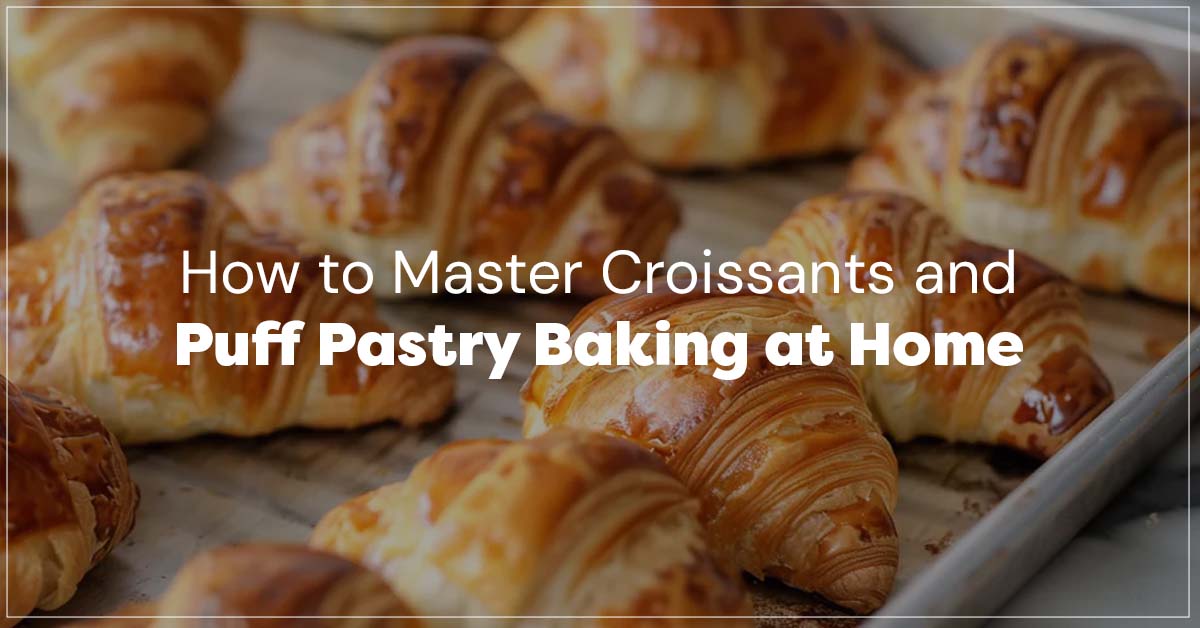Croissants and puff pastry represent classic French pastry, yet so many people won’t attempt to make them, thinking they are too difficult and time-consuming. However, with a little patience, knowledge of techniques, and the right ingredients, you can make delicious pastries from home that rival even the best bakeries.
Learning to create these delicate, flaky layers begins with knowing how to prepare the dough and layering the butter. If you’re serious about improving your baking and taking some classes, check out our baking classes in Chennai, which will help you with practice and experience to make even the most difficult recipes.
Understanding the Basics
Lamination is the process of rolling butter into dough and so on until the dough is sufficiently flaky. Both croissants and puff pastry get their flaky layers through lamination.
Essentially, the goal is creating a dough that separates in the heat of the oven so that it appears light and airy and baked layers are crisp.
Timing is important here. If your butter becomes too soft during the rolling process, it will melt into your dough and your pastry has now become a dense mass instead of a beautifully flaky croissant or puff pastry.
The main difference between croissants and puff pastry, besides all of the science of yeast, is yeast itself. Yeast not only provides a very subtle flavor addition but also creates a light, bouncy and tender crumb.
Puff pastry relies on its layers solely on folding and chilling, which means patience and precision must occur at each step, preferably adhering to the benches and rolling surface as best as possible. Keeping these key factors in mind provides a firm basis of a familiarity with the processes prior to trying out more advanced versions and fillings.
Ingredients Matter
The quality of your ingredients directly translates to the final outcome. It is important to use unsalted butter with a high-fat content as this makes the delicious, flaky, mouth-watering layers. Fresh, high-quality flour provides structure in the dough without weighing it down, while milk gives moisture and richness, plus a small amount of sugar is necessary to achieve the chewy, golden-brown crust of a croissant.
Even if making a homemade puff pastry; it takes a knowledge of what each element does: the water content must be precise to create a workable dough, a pinch of salt enhances the flavor while not being overly salty and overpowering the butter.
Everything counts, from the fat to how much water you have in the dough and if you understand what each ingredient does, you can solve any issues and hopefully produce the same, consistent and professional-quality results in your own kitchen.
Step-by-Step Tips for Success
To assemble croissants or puff pastry from scratch, you need patience and focus. Also pay rigorously close attention to thoroughly chilling your dough before you begin each fold, rolling unevenly can compress some layers more than others and create uneven layers.
You don’t want to overwork your dough since that will develop gluten and make it tough instead of tender. While you may want to hurry up, you really need to allow the dough to rest in-between folds and to keep the butter solid and to develop real layers will take some time.
If you are doing this at home, try to work with a small batch or dough until you become comfortable. Practice working with a simple croissant recipe or many processes associated with basic puff pastry. You can always add complexity and difficulty as you become comfortable with each new process. Don’t worry if your dough is not perfect on early attempts, or even if it isn’t eventually it will get consistently and continually better, the dough will respond much better to your work and you will achieve thicker and flakier layers.
Creative Uses for Puff Pastry
Once you’ve got the fundamentals down, there are no limits. Puff pastry can be filled with savory or sweet fillings, the options from chocolate and almond cream to cheese and vegetables are vast!
Croissants can be plain, filled with chocolate or semi-twisted into imaginative shapes. While the freshness of home-made pastries is appealing, you can also make your own flavors and textures exactly to your liking!
Elevate Your Baking at Home
Baking croissants and puff pastry from scratch can be challenging but rewarding, and hands-on instruction provides a much faster way to climb that learning curve. Our cake baking classes in Anna Nagar will guide you through lamination techniques, dough handling and times and temperatures for baking. Learning from experts helps to clarify why each individual step is important, making it easier to achieve bakery-quality results in your kitchen. With practice and good guidance, you can even master the most complicated pastries!


